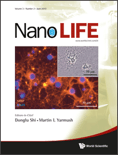
Nano LIFE
Scope & Guideline
Innovating solutions through nanoscale research.
Introduction
Aims and Scopes
- Nanomedicine and Therapeutic Applications:
Research involving the development and application of nanoparticles for drug delivery, cancer therapy, and other medical interventions, highlighting innovative therapeutic strategies. - Sustainable and Green Nanotechnology:
Focus on eco-friendly synthesis methods for nanoparticles and their applications in environmental remediation and sustainable practices. - Nanomaterials Characterization and Applications:
Detailed studies on the synthesis, characterization, and functionalization of nanomaterials for diverse applications including sensors, catalysts, and energy storage. - Electrochemical Sensing Technologies:
Development of novel electrochemical sensors utilizing nanostructured materials for the detection of biological and chemical substances. - Biological and Ecotoxicological Studies:
Investigations into the biological effects and potential toxicity of nanoparticles, including their interactions with biological systems and implications for human health.
Trending and Emerging
- Biogenic Synthesis of Nanoparticles:
There is a growing trend towards the use of natural extracts for the synthesis of nanoparticles, emphasizing sustainability and the potential therapeutic benefits of biogenic materials. - Nanotechnology in Cancer Treatment:
An increasing focus on the application of nanoparticles in targeted cancer therapies, including drug delivery systems and photothermal treatments, showcases the journal's commitment to advancing medical applications. - Smart and Responsive Nanomaterials:
Emerging research on stimuli-responsive nanomaterials, including those that change properties in response to environmental conditions, is gaining traction for applications in drug delivery and biosensing. - Nanotechnology for Environmental Remediation:
Heightened interest in the use of nanomaterials for pollution control and environmental cleanup reflects a broader societal concern for sustainable practices. - Integration of Nanotechnology with 3D Bioprinting:
Innovative approaches combining nanotechnology with 3D printing techniques for tissue engineering and regenerative medicine are emerging as a significant trend, indicating a multidisciplinary approach to biomedical challenges.
Declining or Waning
- Traditional Nanomaterials for Basic Applications:
Research on conventional applications of nanoparticles, such as basic antimicrobial uses and traditional sensing techniques, is becoming less prominent as more innovative and complex applications emerge. - Non-therapeutic Industrial Applications:
There is a noticeable decrease in studies focusing solely on industrial applications of nanotechnology, as the emphasis shifts towards biomedicine and environmental applications. - Basic Characterization Techniques:
Research centered around fundamental characterization methods without significant application or innovation is declining, as there is a greater demand for studies linking characterization to practical applications.
Similar Journals
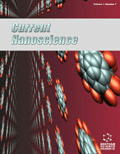
Current Nanoscience
Fostering Interdisciplinary Insights in NanoscienceCurrent Nanoscience is a prominent journal published by Bentham Science Publishers Ltd, dedicated to advancing the field of nanoscience through the dissemination of high-quality research and review articles. Since its inception in 2006, the journal has provided a platform for innovative studies across a variety of related disciplines, including bioengineering, biomedical engineering, biotechnology, and nanotechnology, reflecting its diverse scope and interdisciplinary nature. With a Q3 ranking in several categories such as Biomedical Engineering and Pharmaceutical Science and a Scopus percentile ranking around the 60th in its field, Current Nanoscience serves as a vital resource for researchers and professionals seeking to stay abreast of the latest developments and breakthroughs. Although it operates without an open access model, the journal maintains a commitment to enhancing accessibility and relevance in the scientific community. The editorial team is focused on publishing articles that address both theoretical and practical aspects of nanoscience, ensuring that the findings contribute to knowledge and innovation in areas critical to technology and healthcare.

Nanomedicine Journal
Exploring the Frontiers of Nanotechnology in Healthcare.Nanomedicine Journal, published by Mashhad University of Medical Sciences, serves as a vital platform for research and developments in the dynamic field of nanotechnology applied to medicine. With an ISSN of 2322-3049 and an E-ISSN of 2322-5904, this Open Access journal, operational since 2013, makes cutting-edge research freely accessible to encourage collaborative efforts in this rapidly evolving domain. The journal navigates various areas, including bioengineering, biomedical engineering, materials science, and pharmacology, holding prestigious rankings in categories relevant to these fields. The 2023 Scopus Rankings reveal its significant standing within the scientific community, particularly with a 76th percentile in general medicine. By bridging the gap between laboratory technologies and clinical applications, the Nanomedicine Journal aims to empower researchers, professionals, and students alike to contribute to the innovative landscape of nanomedicine. With a convergence period extending from 2019 to 2024 and an established reputation, this journal is essential for those pursuing advancements in therapeutic solutions and diagnostics through nanotechnology.
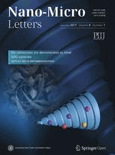
Nano-Micro Letters
Connecting researchers to breakthrough discoveries in nanotechnology.Nano-Micro Letters is a premier open-access journal published by Shanghai Jiao Tong University Press, specializing in groundbreaking research in the fields of Electrical and Electronic Engineering, Nanoscience, and Materials Science. Launched in 2009, this journal has rapidly established its reputation, achieving Q1 ranking across various categories, including Electronic, Optical and Magnetic Materials, and Surfaces, Coatings and Films, indicating its significant impact within the academic community. With an impressive Scopus ranking of #5 out of 797 in Electrical and Electronic Engineering and #2 in Surfaces, Coatings and Films, Nano-Micro Letters serves as a vital platform for disseminating cutting-edge insights and innovations in nanotechnology. Researchers, professionals, and students are encouraged to engage with the open-access content, fostering a collaborative environment that promotes the advancement of knowledge in these dynamic fields.

Small Methods
Advancing small-scale innovations in chemistry and materials science.Small Methods, published by WILEY-V C H VERLAG GMBH, is an esteemed peer-reviewed journal dedicated to advancing the fields of Chemistry and Materials Science. With a 2023 impact factor placing it in the Q1 category of both disciplines, and impressive Scopus rankings (27th in Materials Science and Chemistry), this journal serves as a vital platform for researchers and professionals alike to disseminate their innovative methodologies and pioneering experiments. Spanning a wide array of topics from nanotechnology to polymer science, Small Methods encourages the submission of high-quality research that illustrates novel small-scale methods applicable in various scientific contexts. Despite its absence of Open Access options, the journal is highly regarded for its rigorous editorial standards and comprehensive peer-review process, making it indispensable for students and academics aiming to stay at the forefront of these dynamic fields. With convergence years from 2017 to 2024, Small Methods continues to define the intersection of methodological innovation and practical application in both chemistry and material sciences.
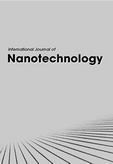
International Journal of Nanotechnology
Advancing the Frontiers of Nanotechnology ResearchInternational Journal of Nanotechnology, published by INDERSCIENCE ENTERPRISES LTD, is a prominent academic platform dedicated to advancing research in the rapidly evolving field of nanotechnology. With an ISSN of 1475-7435 and an E-ISSN of 1741-8151, this journal has been contributing valuable insights and innovative findings since its inception in 2004. Although currently not an open-access publication, it serves as an essential resource for researchers, professionals, and students alike, encompassing critical areas such as bioengineering, condensed matter physics, and materials science. The journal is indexed in Scopus, highlighting its academic rigor, albeit ranking in the lower quartiles across several categories. As it progresses towards its 2024 milestone, the International Journal of Nanotechnology continues to play a crucial role in fostering collaborative scientific discourse and pushing the boundaries of knowledge in nanoscience. With a distinguished reputation in the United Kingdom and beyond, it is a vital tool for anyone looking to stay at the forefront of nanotechnology advancements.
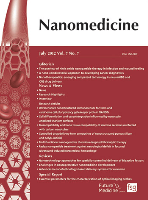
Nanomedicine
Catalyzing Innovations in the World of NanomedicineNanomedicine, published by Future Medicine Ltd, is a premier academic journal dedicated to the rapidly evolving field of nanotechnology in medicine. With an emphasis on innovative research and applications, this journal encompasses a broad spectrum of topics including bioengineering, biomedical engineering, and nanoscience, among others. Featuring an impressive Q1 ranking in Development and multiple Q2 rankings across significant categories, it serves as a pivotal resource for researchers and professionals aiming to stay at the forefront of advancements in these disciplines. While the journal is not open access, it is accessible through various institutional subscriptions, ensuring wide dissemination of cutting-edge findings. Notably, it has achieved substantial impact within the scientific community, indicated by its high rankings in Scopus and overall commitment to enhancing the understanding and application of nanomedicine. This journal is a vital conduit for fostering collaborations and innovations that transcend traditional medical paradigms.

Nano Futures
Connecting Nanoscale Science with Practical SolutionsNano Futures, published by IOP Publishing Ltd, is an influential journal dedicated to advancing the field of nanoscale science and technology, encompassing a wide range of disciplines such as Atomic and Molecular Physics, Bioengineering, and Materials Science. With a growing impact within the academic community, this journal has achieved a notable Q2 classification in categories like Chemistry and Electrical Engineering, making it a critical resource for researchers, professionals, and students seeking to explore innovative advancements in nanotechnology. Established in 2017 and operating through 2024, Nano Futures provides open access options for readers, ensuring wider dissemination and engagement with cutting-edge research findings. The journal's commitment to showcasing high-quality research makes it an essential channel for exploring the intersection of nanoscale innovations and practical applications in various industries.
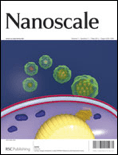
Nanoscale
Connecting Global Minds in Nanoscience.Nanoscale is a premier academic journal published by the Royal Society of Chemistry, dedicated to advancing the field of nanoscience and nanotechnology. With both its ISSN (2040-3364) and E-ISSN (2040-3372) ensuring wide accessibility, the journal is renowned for its high-impact research contributions, reflected in its impressive 2023 Impact Factor and prestigious Q1 ranking in both Materials Science (Miscellaneous) and Nanoscience and Nanotechnology categories. Since its inception in 2009, Nanoscale has fostered a collaborative platform where leading researchers from around the globe share their innovative findings across a multitude of topics spanning from material synthesis to applications in nanotechnology. The journal not only serves as a valuable resource for professionals, researchers, and students but also actively engages the academic community in discussing emerging trends, thus shaping the future of nanoscience. Situated in the heart of the UK at Thomas Graham House, Science Park, Milton Rd, Cambridge CB4 0WF, Nanoscale remains a key publication for those looking to keep abreast of the latest breakthroughs in an ever-evolving field.

Micro & Nano Letters
Empowering breakthroughs in miniaturized science.Micro & Nano Letters is a prominent open-access journal published by WILEY, dedicated to advancing the fields of micro and nanoscale science and technology. Since its inception in 2007, the journal has been a valuable resource for researchers, professionals, and students, delivering high-quality research that supports innovation and collaboration in bioengineering, biomedical engineering, condensed matter physics, materials science, and nanoscience. With an impact factor that reflects its growing influence, Micro & Nano Letters has earned recognition in various Scopus categories, including a Q3 ranking in both Condensed Matter Physics and Materials Science as of 2023. Its commitment to open access, established in 2021, ensures that the latest developments in micro- and nanotechnologies are accessible to a global audience, fostering a multidisciplinary dialogue across academia and industry. The journal continues to play a critical role in disseminating cutting-edge research and promoting technological advancements worldwide.
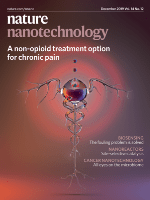
Nature Nanotechnology
Catalyzing Change with Cutting-Edge Nanoscience.Nature Nanotechnology, published by NATURE PORTFOLIO, stands at the forefront of scientific innovation, focusing on the rapidly evolving field of nanoscience and nanotechnology. With an impressive impact factor and ranking in the top Q1 quartiles across multiple disciplines—including Atomic and Molecular Physics, Bioengineering, and Materials Science—this journal is a pivotal resource for researchers and professionals dedicated to advancing knowledge and applications at the nanoscale. Its diverse scope encompasses cutting-edge research that bridges disciplines, addressing critical challenges in engineering, physics, and biomedical fields. Although the journal currently does not offer an open-access option, readers can access a wealth of information that is vital for anyone involved in pioneering research and development efforts. With its robust editorial standards and a commitment to publishing high-caliber, groundbreaking work, Nature Nanotechnology serves as an indispensable platform for the dissemination of transformative ideas that will shape the future of technology and science.